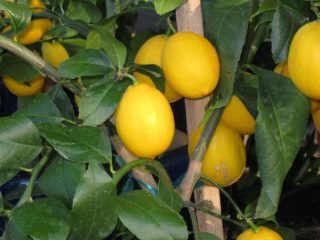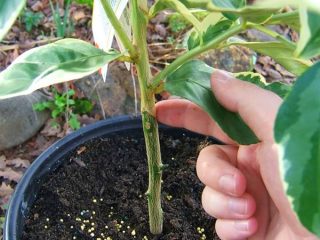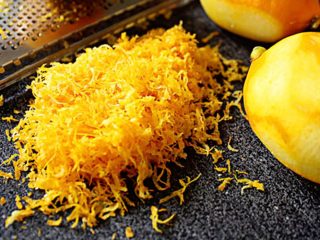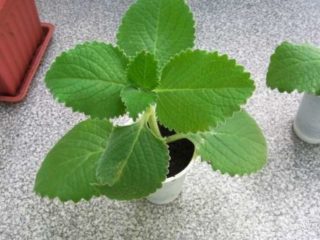Content
In its hot homeland, agave forms real trees or large shrubs, up to 5 m high. Sitting in a pot, the stem does not grow more than 140 cm.
The aloe trunk is powerful and succulent, erect and branched. At the base of an adult plant, young rosettes are often formed, suitable for planting.
The leaves are fleshy, bright green, elongated-pointed, very juicy, covered along the edge with whitish spines. They are located alternately on the stem, and are collected into rosettes on the shoots.
The root is fibrous, very powerful, orange in color.
Aloe blooms with bright red flowers - tubular bells, collected in inflorescences of the brush. Inflorescences are formed in the axils of the leaves. When grown at home, it is extremely rare to observe the flowering of agave.
Even more information on growing and propagating succulents.
Medicinal use
In addition to decorative use, aloe has been used as a medicinal plant since ancient times. The juice of its leaves contains many vitamins and active substances that have a pronounced immunostimulating, wound-healing and bactericidal effect on the body.
In folk medicine, the juice of the plant in pure form or mixed with honey is used to treat sore throats, stomach ulcers, burns, ulcers, dermatitis, and eye diseases.
Plant materials are harvested from adult specimens over 4 years old.Before removing the leaves (the lower healthy large plates are suitable), the plant is not watered for 2 weeks. Before extracting the juice, the leaves are kept in a dark and cool place for 2 weeks.
Growing conditions
The succulent requires bright light; direct sunlight does not harm it. The plant is placed on a southern, or at least eastern, windowsill.
Comfortable air temperature for aloe is within +18 (in winter) +27 degrees. Without consequences, the perennial can survive a temperature drop of up to +8 degrees. It tolerates heat easily.
Loves dry air and does not need spraying. Watering is carried out infrequently: once a week in summer and once a month in winter.
The pot for growing aloe should be spacious and deep, since the root system of the flower is very developed.
The soil required is light, loose, not very fertile. Standard soil mixture for cacti is suitable.
Care
Agave practically does not require the attention of the gardener, surviving even in Spartan conditions. But the main thing you should pay attention to when growing is watering. The succulent is extremely sensitive to excess moisture in the soil and in the air, reacting to it with the appearance of rot. The next moistening of the soil in the pot with aloe is carried out after the top layer of soil has completely dried.
Use only soft water at room temperature.
There is no need to spray the agave, but the dust accumulated on the leaves interferes with the normal process of photosynthesis. It is difficult to wipe the leaves because they are prickly and numerous, so the plant is given a warm shower. To avoid flooding the soil in the pot, cover it with a piece of polyethylene.
In the summer, the agave can be taken out into the garden. Fresh air and bright sun will have a beneficial effect on the health of the perennial.
You can feed aloe from March to October, using mineral formulations designed for succulents. It is prohibited to introduce organic matter into the soil, as this leads to the development of fungal diseases. The frequency of feeding is once a month.
Young plants need to be replanted once a year, changing the container to a larger pot. Adult specimens do not need replanting. For the plant, buy soil for growing cacti in the store or prepare a soil of sand (perlite) and ordinary garden soil. Pieces of charcoal must be added to the substrate to protect the roots from rot.
Timely removal of side rosettes and root shoots helps maintain the beautiful shape of the agave crown. But still, by the age of 8-10 years, aloe grows and turns into a large and dense plant. Then it is rejuvenated by seating it using rosettes.
In the period from November to early March, the agave is wintering. Stop feeding the plant, water it less often and place it in a cool place (+16 +19 degrees). If it is impossible to lower the temperature in the room, then care for the plant is carried out according to the usual scheme.
Reproduction
The easiest way to get new aloe plants is to plant rosettes, which grow in abundance at the base of the stem. The tops of shoots are also useful for propagation.
Planting material is harvested in spring and early summer. The cut stalk with leaves, 6-8 cm long, is left to air dry for about 10 hours. The cut can be dusted with charcoal powder mixed with the drug Kornevin.
Aloe rosettes are planted in a slightly moistened substrate consisting of 2 parts sand and 1 part soil. You can use clean, damp vermiculite for rooting.The seedlings are placed on a bright windowsill, providing warmth and regular watering.
Some gardeners place rosettes in a glass of water to which an activated carbon tablet has been added. In water it is easy to track how the roots of the cutting grow.
Rooting lasts about a month, after which the aloe shoot is placed in a standard substrate and normal care is continued.
Pests and diseases
Agave faces only one ailment when grown at home - the root system rots from excessive watering. The leaves of a sick plant begin to turn yellow, they wither and fall off. Brown spots may appear at the base of the stem, and it softens. Without taking immediate action, the aloe will die.
The plant must be removed from the substrate and all damaged roots must be cut off and wilted leaves removed. Immerse healthy roots for half an hour in a solution of Maxim or potassium permanganate for disinfection. Aloe is planted in a new, clean substrate.
The following pests can parasitize aloe: aphids, mealybugs, spider mites. As a rule, plants planted in open ground suffer from them. If a pest is detected, you should immediately treat the plant crown with Aktara, Fitoverm, Aktellik, twice with an interval of 2 weeks.
Important! After using the drugs, the leaves can be cut to obtain a medicinal product only after a month.
Possible problems
Even such an unpretentious plant as tree aloe can suffer from improper care. By changes in the appearance of a perennial, one can judge the mistakes made.
- The leaves are curled into a tube. Lack of watering combined with heat. The flower needs to be watered.
- The stem becomes elongated and the leaf blades become pale. Aloe lacks light.If the flower cannot be placed on a south or east window, hang a phyto lamp above it, turning it on for 10-12 hours daily.
- The leaves curl, turn pale, become smaller, and shoot growth stops. The soil in the pot is too compacted and lacks nutrients. It will help to restore the plant's decorative appearance by replanting it in a new substrate.
The main value of aloe vera is not its decorative effect, but its outstanding medicinal properties. Having this unpretentious succulent at home, you can independently prepare simple and environmentally friendly potions to maintain the health of your family.









